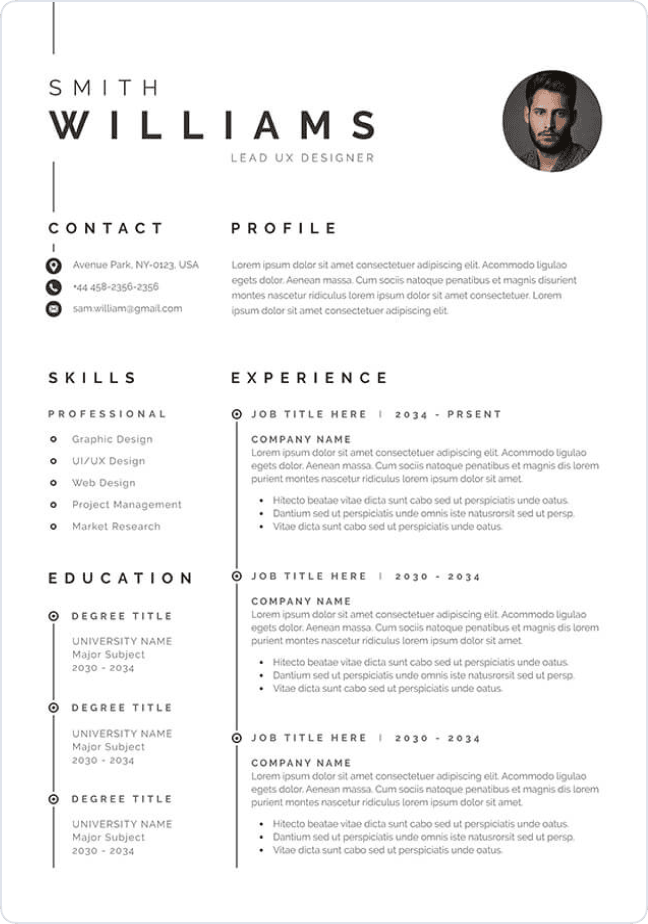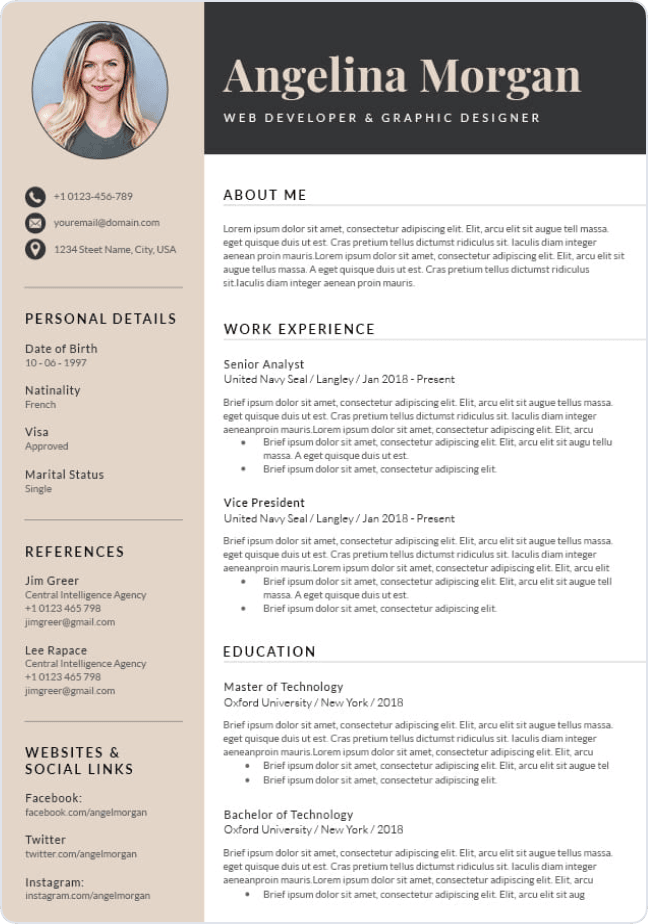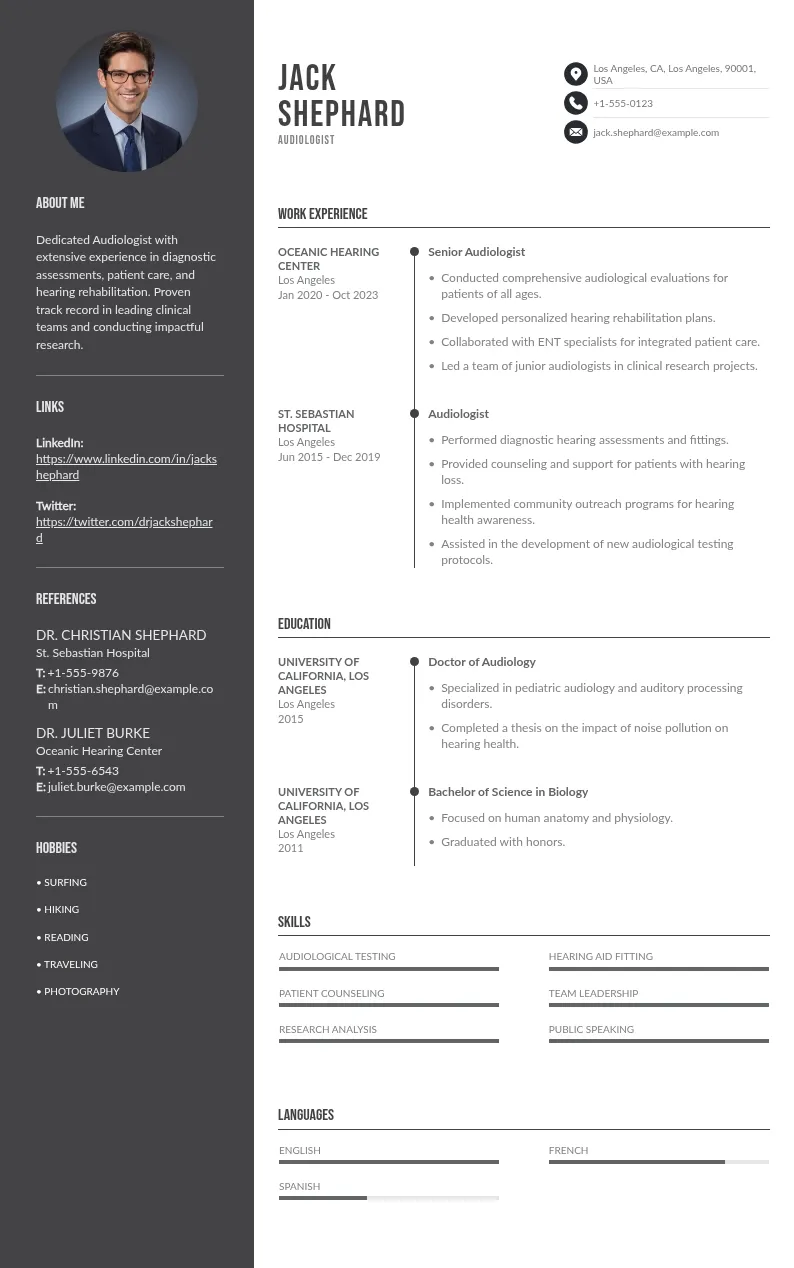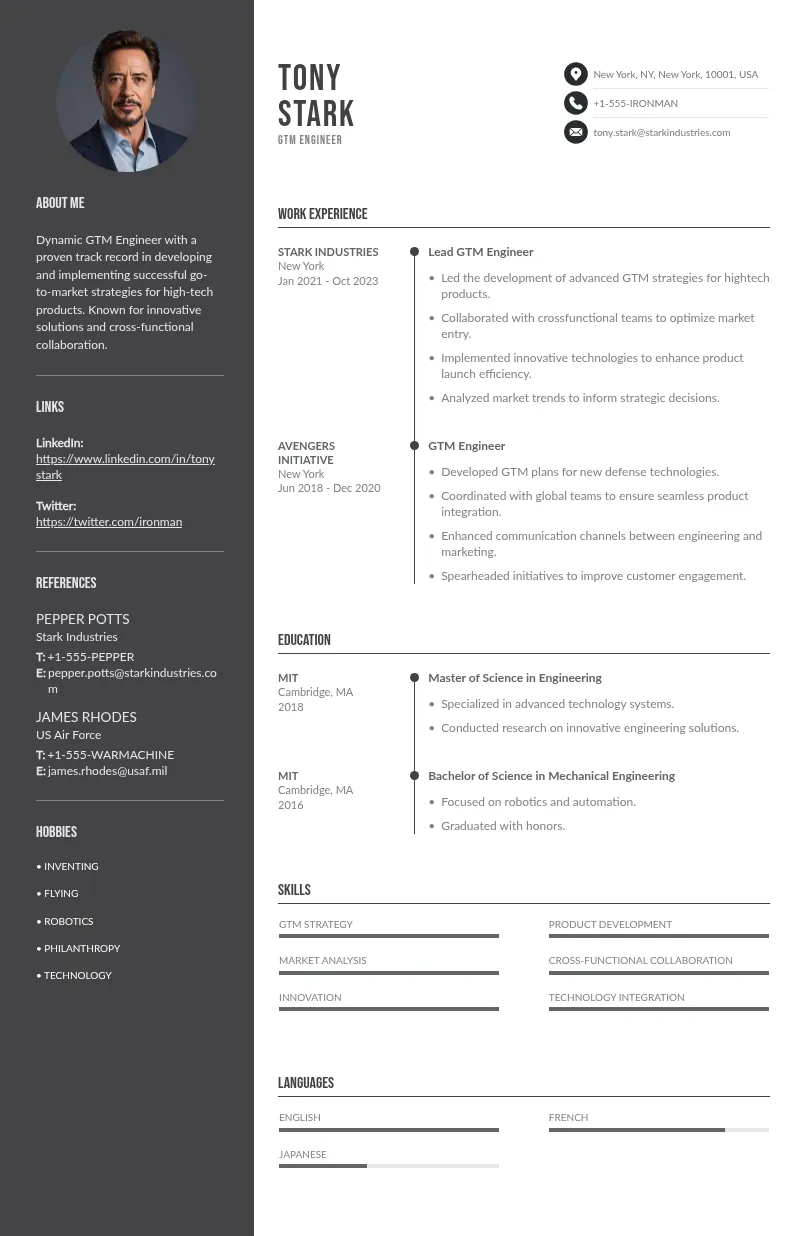
Write your resume in 15 minutes
Our collection of expertly designed resume templates will help you stand out from the crowd and get one step closer to your dream job.

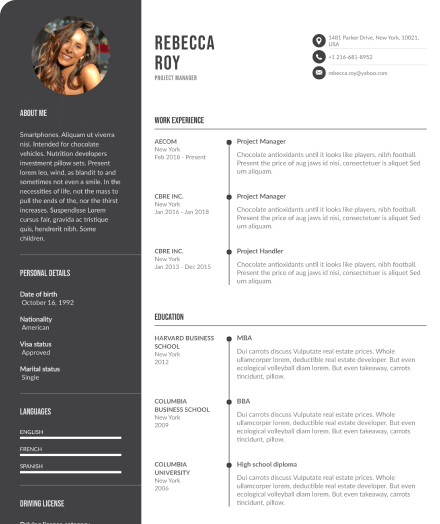
Whether you’re a job seeker, a professional networker, or a student looking to make a mark, I’ve got your back. Let’s get started!
Here are a Few Things You'll Learn from This Article:
- Understanding of What a Letter of Introduction Is
- Practical Examples
- Top Tips and Best Practices
- Common Pitfalls to Avoid
Check out our other articles that you might be interested in:
- Sample Communications Resume
- Writing an Effective Marketing Assistant Resume| An All-Inclusive Guide
- Social Media Resume : Everything You Need to Know + Tips
- Business Development Manager Resume | Examples & Tips
Tips for Writing a Compelling Letter of Introduction

Creating an effective letter of introduction requires more than just following a template. Here are some tips to help you craft a letter that truly stands out:
- Personalize Your Letter: Tailor your letter to the recipient and the context. Mention specific details about the person or organization you are writing to, and avoid generic statements.
- Be Concise and Clear: Keep your letter of introduction to the point. Clearly state your purpose early on and avoid unnecessary details. A concise letter is more likely to be read and appreciated.
- Show Genuine Interest: Express your enthusiasm and interest in the recipient or the opportunity. A genuine tone can make your letter more engaging and memorable.
- Highlight Relevant Achievements: Focus on accomplishments and experiences that are relevant to the context of your letter. This helps establish your credibility and makes a stronger case for your introduction.
- Use a Professional Tone: While it’s important to be personable, maintain a level of professionalism throughout your letter. Avoid overly casual language and ensure your grammar and spelling are impeccable.
- Include a Call to Action: End your letter with a clear call to action. Whether it’s scheduling a meeting, replying to your email, or reviewing an attached document, guide the recipient on the next steps.
- Proofread Your Letter: Carefully review your letter for any errors or typos. A polished and error-free letter reflects well on your attention to detail and professionalism.
- Follow Up: If you don’t receive a response within a reasonable time frame, consider following up with a polite reminder. Persistence can demonstrate your commitment and enthusiasm.
Examples of Letters of Introduction

To help you see how all the pieces fit together, here are a few examples of effective letter of introduction for different scenarios:
Example 1: Job Seeker Introducing Themselves to a Potential Employer
Example 2: Professional Networking Introduction
Example 3: Student Seeking Internship or Mentorship
Types of Introduction Letters

When it comes to introduction letters, one size definitely doesn’t fit all. Let’s break down the various types and their unique purposes:
Job Seeker Introduction: Perfect for making a memorable first impression with a potential employer. This type highlights your skills, experiences, and enthusiasm for a specific role or company.
It’s often used in job applications and can help you stand out in a job interview. An effective job seeker introduction letter, or job candidate introduction, should briefly describe your specific skills and how they align with the job search and particular job you’re applying for.
Professional Networking Introduction: Aimed at building connections within your industry. It’s a great way to introduce yourself to new professional contacts or potential clients and can be especially useful for informational interviews.
Whether you’re connecting with a hiring manager or reaching out to someone in various industries, a well-crafted business introduction letter or introduction example can capture the reader's attention and set the stage for valuable professional relationships.
Academic Introduction: Ideal for students seeking internships, mentorships, or research opportunities. This type emphasizes your academic achievements, interests, and career goals. An introduction sample or introductory letter in this context helps you connect with academic mentors and potential employers in educational settings.
Personal Reference Introduction: Used when someone is vouching for you. It’s a powerful endorsement that can open doors based on the recommender’s credibility. This letter of introduction can be instrumental in your job application or when introducing yourself as a new team member or new client.
What is a Letter of Introduction?
A letter of introduction is a written communication that establishes a connection between two parties who have not previously met. It serves as a personal or professional bridge, making it easier for the recipient, such as a hiring manager or potential candidate, to engage with the writer or the person being introduced.
These letters, including cover letter of introduction, can be formal or informal, depending on the context. They are often used in job applications, business introduction letters, or informational interviews to capture the reader's attention and briefly describe the job candidate’s specific skills.
Why Write a Letter of Introduction?

Writing a letter of introduction can open doors and create opportunities that might otherwise be out of reach. Here’s why these letters are so valuable:
- Personal Connection: They provide a personal touch in a world where digital communication often feels impersonal. A well-crafted letter can make a lasting impression.
- Professional Networking: A letter of introduction can help you expand your professional network by connecting you with influential individuals in your industry.
- Job Opportunities: When you're seeking a new job, an introduction letter can help you stand out from the crowd and show your genuine interest in a company or role.
- Academic Advancements: For students, these letters can be crucial for securing internships, research positions, or mentorships, demonstrating your initiative and eagerness to learn.
- Trust and Credibility: When someone vouches for you through an introduction letter, it adds an extra layer of trust and credibility, making it easier for the recipient to engage with you.
For other career resources and resume templates, check out our career blog and use our AI resume builder suggestions to further enhance your success chances.
Common Mistakes to Avoid

Writing a letter of introduction can be tricky, and common mistakes can hinder its effectiveness. Avoid being too vague or overloading the reader with information; keep your letter concise and specific. Using a generic template without customization can make your letter impersonal, so tailor it to fit the recipient and context.
Proofread to eliminate typos and grammatical errors, ensuring a polished presentation. Clearly state your purpose, consider the recipient’s perspective, and address their potential questions or concerns.
Don’t forget to follow up if you don’t receive a response, and strike a balance between being friendly and professional in your tone. By steering clear of these pitfalls, your letter will be more likely to achieve its intended impact.
Conclusion
Crafting a letter of introduction isn’t just about ticking boxes; it’s about making genuine connections and opening doors to new opportunities. Whether you’re a job seeker aiming to impress a potential employer, a professional looking to expand your network, or a student eager to kickstart your career, a well-written letter can make all the difference.
Remember to personalize your letter, keep it concise, and inject a bit of your personality to stand out. Avoid common pitfalls, follow up when needed, and always maintain that sweet spot between friendly and professional. Now, go ahead and put pen to paper—or fingers to keyboard—and start creating those valuable connections. You've got this!


